Frequent persons on Canary-islands's street signs
countries
65 names / 174 streets
Mary, mother of Jesus
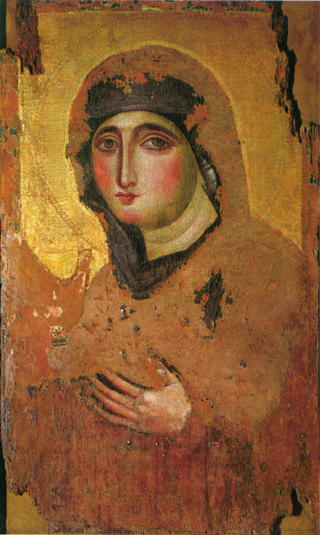 9
Mary was a first-century Jewish woman of Nazareth, the wife of Joseph and the mother of Jesus. She is a central figure of Christianity, venerated under various titles such as virgin or queen, many of...
9
Mary was a first-century Jewish woman of Nazareth, the wife of Joseph and the mother of Jesus. She is a central figure of Christianity, venerated under various titles such as virgin or queen, many of...
Christopher Columbus
 8
Christopher Columbus was an Italian explorer and navigator from the Republic of Genoa who completed four Spanish-based voyages across the Atlantic Ocean sponsored by the Catholic Monarchs, opening...
8
Christopher Columbus was an Italian explorer and navigator from the Republic of Genoa who completed four Spanish-based voyages across the Atlantic Ocean sponsored by the Catholic Monarchs, opening...
Juan Carlos I of Spain
 8
Juan Carlos I is a member of the Spanish royal family. He was the King of Spain from 1975 until his abdication in 2014. In Spain, since his abdication, Juan Carlos has usually been referred to as the...
8
Juan Carlos I is a member of the Spanish royal family. He was the King of Spain from 1975 until his abdication in 2014. In Spain, since his abdication, Juan Carlos has usually been referred to as the...
Fernando León y Castillo
 6
Fernando León y Castillo, Marqués del Muni was a Spanish politician and diplomat, he decided on an intervention of Spain and North Africa.
6
Fernando León y Castillo, Marqués del Muni was a Spanish politician and diplomat, he decided on an intervention of Spain and North Africa.
Saint Dominic
 5
Saint Dominic,, also known as Dominic de Guzmán, was a Castilian Catholic priest and the founder of the Dominican Order. He is the patron saint of astronomers and natural scientists, and he and his...
5
Saint Dominic,, also known as Dominic de Guzmán, was a Castilian Catholic priest and the founder of the Dominican Order. He is the patron saint of astronomers and natural scientists, and he and his...
Anthony of Padua
 5
Anthony of Padua, OFM or Anthony of Lisbon was a Portuguese Catholic priest and friar of the Franciscan Order.
5
Anthony of Padua, OFM or Anthony of Lisbon was a Portuguese Catholic priest and friar of the Franciscan Order.
John the Baptist
 5
John the Baptist was a Jewish preacher active in the area of the Jordan River in the early 1st century AD. He is also known as Saint John the Forerunner in Eastern Orthodoxy, John the Immerser in...
5
John the Baptist was a Jewish preacher active in the area of the Jordan River in the early 1st century AD. He is also known as Saint John the Forerunner in Eastern Orthodoxy, John the Immerser in...
Francis of Assisi
 4
Giovanni di Pietro di Bernardone, known as Francis of Assisi, was an Italian mystic, poet and Catholic friar who founded the religious order of the Franciscans. He was inspired to lead a Christian...
4
Giovanni di Pietro di Bernardone, known as Francis of Assisi, was an Italian mystic, poet and Catholic friar who founded the religious order of the Franciscans. He was inspired to lead a Christian...
Francisco Pizarro
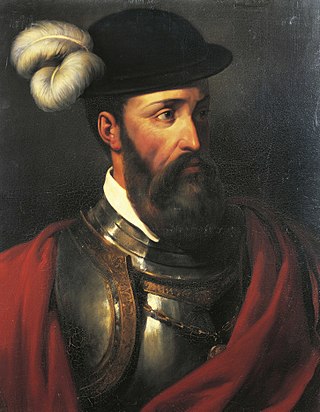 4
Francisco Pizarro, Marquess of the Atabillos was a Spanish conquistador, best known for his expeditions that led to the Spanish conquest of the Inca Empire.
4
Francisco Pizarro, Marquess of the Atabillos was a Spanish conquistador, best known for his expeditions that led to the Spanish conquest of the Inca Empire.
Benito Pérez Galdós
 4
Benito Pérez Galdós was a Spanish realist novelist. He was a leading literary figure in 19th-century Spain, and some scholars consider him second only to Miguel de Cervantes in stature as a Spanish...
4
Benito Pérez Galdós was a Spanish realist novelist. He was a leading literary figure in 19th-century Spain, and some scholars consider him second only to Miguel de Cervantes in stature as a Spanish...
José Calvo Sotelo
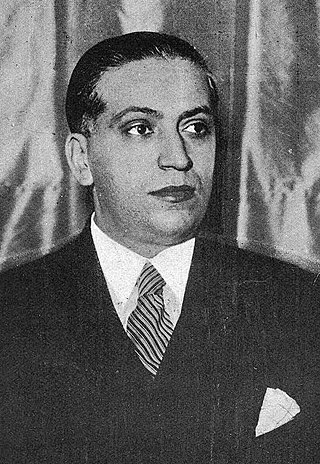 3
José Calvo Sotelo, 1st Duke of Calvo Sotelo, GE was a Spanish jurist and politician. He was the minister of finance during the dictatorship of Miguel Primo de Rivera and a leading figure during the...
3
José Calvo Sotelo, 1st Duke of Calvo Sotelo, GE was a Spanish jurist and politician. He was the minister of finance during the dictatorship of Miguel Primo de Rivera and a leading figure during the...
César Manrique
 3
César Manrique Cabrera was a Spanish artist, sculptor and nature activist from Lanzarote, known particularly for the architectural projects in which he was involved as artistic director in his island.
3
César Manrique Cabrera was a Spanish artist, sculptor and nature activist from Lanzarote, known particularly for the architectural projects in which he was involved as artistic director in his island.
Miguel Hernández
 3
Miguel Hernández Gilabert was a 20th-century Spanish-language poet and playwright associated with the Generation of '27 and the Generation of '36 movements. Born and raised in a family of low...
3
Miguel Hernández Gilabert was a 20th-century Spanish-language poet and playwright associated with the Generation of '27 and the Generation of '36 movements. Born and raised in a family of low...
Manuel de Falla
Cosme Damián Churruca
 3
Cosme Damián de Churruca y Elorza was a Basque Spanish noble, admiral of the Royal Spanish Armada, naval scientist and Mayor of Motrico. During the Battle of Trafalgar, he was the commander of the...
3
Cosme Damián de Churruca y Elorza was a Basque Spanish noble, admiral of the Royal Spanish Armada, naval scientist and Mayor of Motrico. During the Battle of Trafalgar, he was the commander of the...
Michael (archangel)
 3
Michael, also called Saint Michael the Archangel, Archangel Michael and Saint Michael the Taxiarch is an archangel in Judaism, Christianity, Islam, and the Baha'i faith. The earliest surviving...
3
Michael, also called Saint Michael the Archangel, Archangel Michael and Saint Michael the Taxiarch is an archangel in Judaism, Christianity, Islam, and the Baha'i faith. The earliest surviving...
Saint Roch
 2
Roch, also called Rock in English, was a Majorcan Catholic confessor whose death is commemorated on 16 August and 9 September in Italy; he was especially invoked against the plague. He has the...
2
Roch, also called Rock in English, was a Majorcan Catholic confessor whose death is commemorated on 16 August and 9 September in Italy; he was especially invoked against the plague. He has the...
Peter of Saint Joseph de Betancur
Thomé Cano
 2
Thomé Cano fue un marino español, autor de una obra sobre construcción naval titulada Arte para fabricar, fortificar, y aparejar naos de guerra, y merchante, publicada en 1611.
2
Thomé Cano fue un marino español, autor de una obra sobre construcción naval titulada Arte para fabricar, fortificar, y aparejar naos de guerra, y merchante, publicada en 1611.
Sancho Panza
 2
Sancho Panza is a fictional character in the novel Don Quixote written by Spanish author Miguel de Cervantes Saavedra in 1605. Sancho acts as squire to Don Quixote and provides comments throughout...
2
Sancho Panza is a fictional character in the novel Don Quixote written by Spanish author Miguel de Cervantes Saavedra in 1605. Sancho acts as squire to Don Quixote and provides comments throughout...
Peter González
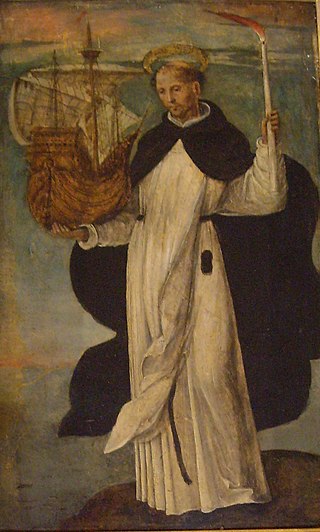 2
Peter González Telmo, OP, also known as Saint Elmo, was a Castilian Dominican friar and priest, born in 1190 in Frómista, Palencia, Kingdom of Castile and Leon.
2
Peter González Telmo, OP, also known as Saint Elmo, was a Castilian Dominican friar and priest, born in 1190 in Frómista, Palencia, Kingdom of Castile and Leon.
Antonio Domínguez Ortiz
 2
Antonio Domínguez Ortiz was a Spanish historian, one of the leading specialists in the history of the Spanish Antiguo Régimen of the 16th through 18th centuries, in particular in social history. He...
2
Antonio Domínguez Ortiz was a Spanish historian, one of the leading specialists in the history of the Spanish Antiguo Régimen of the 16th through 18th centuries, in particular in social history. He...
Juan Bravo Murillo
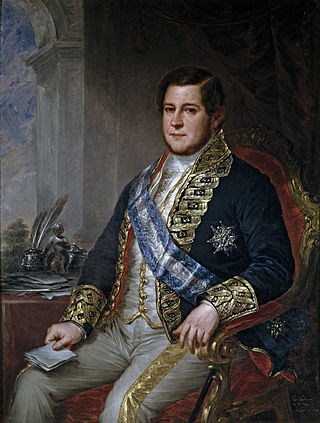 2
Juan Bravo Murillo was a Spanish politician, jurist and economist. He was prime minister of Spain from 14 January 1851 to 14 December 1852 during the reign of Isabella II.
2
Juan Bravo Murillo was a Spanish politician, jurist and economist. He was prime minister of Spain from 14 January 1851 to 14 December 1852 during the reign of Isabella II.
Simón Bolívar
 2
Simón José Antonio de la Santísima Trinidad Bolívar Palacios Ponte y Blanco was a Venezuelan military and political leader who led what are currently the countries of Colombia, Venezuela, Ecuador,...
2
Simón José Antonio de la Santísima Trinidad Bolívar Palacios Ponte y Blanco was a Venezuelan military and political leader who led what are currently the countries of Colombia, Venezuela, Ecuador,...
Mark the Evangelist
 2
Mark the Evangelist also known as John Mark or Saint Mark, is the person who is traditionally ascribed to be the author of the Gospel of Mark. Modern Bible scholars have concluded that the Gospel of...
2
Mark the Evangelist also known as John Mark or Saint Mark, is the person who is traditionally ascribed to be the author of the Gospel of Mark. Modern Bible scholars have concluded that the Gospel of...
Charles V, Holy Roman Emperor
 2
Charles V was Holy Roman Emperor and Archduke of Austria from 1519 to 1556, King of Spain from 1516 to 1556, and Lord of the Netherlands as titular Duke of Burgundy from 1506 to 1555. He was heir to...
2
Charles V was Holy Roman Emperor and Archduke of Austria from 1519 to 1556, King of Spain from 1516 to 1556, and Lord of the Netherlands as titular Duke of Burgundy from 1506 to 1555. He was heir to...
Tony Gallardo
 2
Tony Gallardo (Antonio Gallardo Navarro) (Las Palmas de Gran Canaria, España, 6 de abril de 1929; ib., 28 de julio de 1996) fue un escultor y político español.
2
Tony Gallardo (Antonio Gallardo Navarro) (Las Palmas de Gran Canaria, España, 6 de abril de 1929; ib., 28 de julio de 1996) fue un escultor y político español.
Àngel Guimerà
 2
Àngel Guimerà i Jorge, usually known simply as Àngel Guimerà, was a Catalan playwriter. His work is known for bringing together under romantic aspects the main elements of realism. He is considered...
2
Àngel Guimerà i Jorge, usually known simply as Àngel Guimerà, was a Catalan playwriter. His work is known for bringing together under romantic aspects the main elements of realism. He is considered...
Clement of Rome
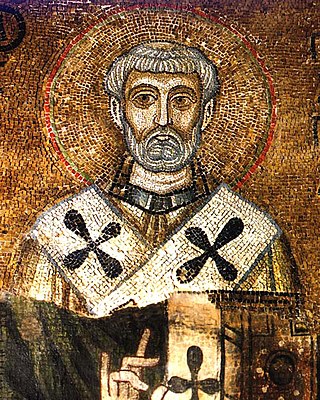 2
Clement of Rome, also known as Pope Clement I, was the bishop of Rome in the late first century AD. He is listed by Irenaeus and Tertullian as the bishop of Rome, holding office from 88 AD to his...
2
Clement of Rome, also known as Pope Clement I, was the bishop of Rome in the late first century AD. He is listed by Irenaeus and Tertullian as the bishop of Rome, holding office from 88 AD to his...
Miguel de Unamuno
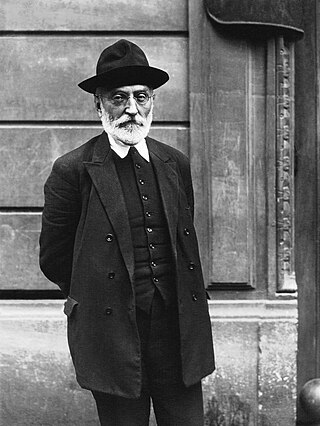 2
Miguel de Unamuno y Jugo was a Spanish essayist, novelist, poet, playwright, philosopher, professor of Greek and Classics, and later rector at the University of Salamanca.
2
Miguel de Unamuno y Jugo was a Spanish essayist, novelist, poet, playwright, philosopher, professor of Greek and Classics, and later rector at the University of Salamanca.
Saint Sebastian
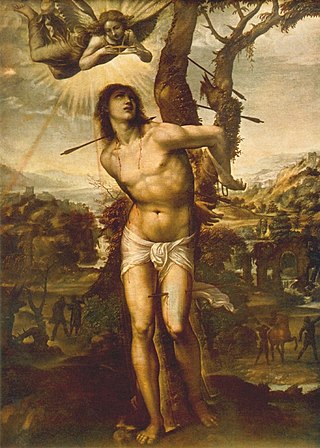 2
Sebastian was an early Christian saint and martyr. According to traditional belief, he was killed during the Diocletianic Persecution of Christians. He was initially tied to a post or tree and shot...
2
Sebastian was an early Christian saint and martyr. According to traditional belief, he was killed during the Diocletianic Persecution of Christians. He was initially tied to a post or tree and shot...
Isaac Albéniz
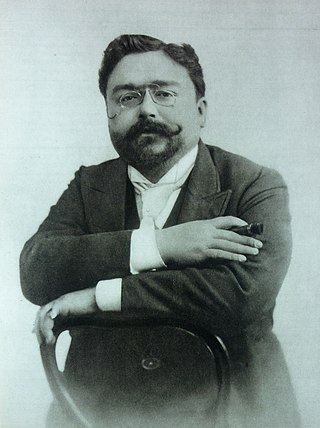 2
Isaac Manuel Francisco Albéniz y Pascual was a Spanish virtuoso pianist, composer, and conductor. He is one of the foremost composers of the Post-Romantic era who also had a significant influence on...
2
Isaac Manuel Francisco Albéniz y Pascual was a Spanish virtuoso pianist, composer, and conductor. He is one of the foremost composers of the Post-Romantic era who also had a significant influence on...
José María Gil-Robles y Quiñones
Alfonso XIII
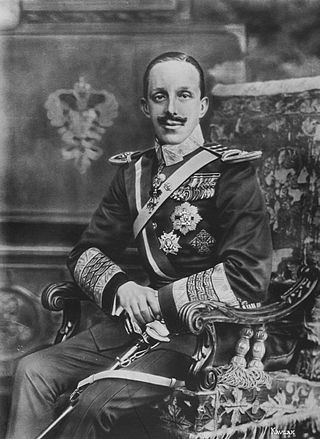 2
Alfonso XIII, also known as El Africano or the African due to his Africanist views, was King of Spain from his birth until 14 April 1931, when the Second Spanish Republic was proclaimed. He became a...
2
Alfonso XIII, also known as El Africano or the African due to his Africanist views, was King of Spain from his birth until 14 April 1931, when the Second Spanish Republic was proclaimed. He became a...
Francis Xavier
 2
Francis Xavier, SJ, venerated as Saint Francis Xavier, was a Spanish Catholic missionary and saint who co-founded the Society of Jesus and, as a representative of the Portuguese Empire, led the first...
2
Francis Xavier, SJ, venerated as Saint Francis Xavier, was a Spanish Catholic missionary and saint who co-founded the Society of Jesus and, as a representative of the Portuguese Empire, led the first...
Infante Francisco de Paula of Spain
 2
Infante Francisco de Paula of Spain was an Infante of Spain and the youngest son of Charles IV of Spain and Maria Luisa of Parma. He was a brother of Ferdinand VII, as well as the uncle and...
2
Infante Francisco de Paula of Spain was an Infante of Spain and the youngest son of Charles IV of Spain and Maria Luisa of Parma. He was a brother of Ferdinand VII, as well as the uncle and...
Pope John XXIII
 2
Pope John XXIII was head of the Catholic Church and sovereign of the Vatican City State from 28 October 1958 until his death in June 1963.
2
Pope John XXIII was head of the Catholic Church and sovereign of the Vatican City State from 28 October 1958 until his death in June 1963.
Santiago Ramón y Cajal
 2
Santiago Ramón y Cajal was a Spanish neuroscientist, pathologist, and histologist specializing in neuroanatomy and the central nervous system. He and Camillo Golgi received the Nobel Prize in...
2
Santiago Ramón y Cajal was a Spanish neuroscientist, pathologist, and histologist specializing in neuroanatomy and the central nervous system. He and Camillo Golgi received the Nobel Prize in...
Luis Morote
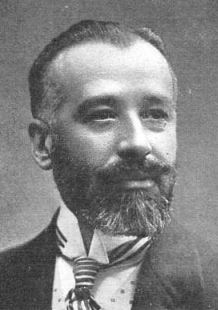 2
Luis Morote y Greus fue un escritor, periodista y político español perteneciente al regeneracionismo.
2
Luis Morote y Greus fue un escritor, periodista y político español perteneciente al regeneracionismo.
Bernardo de la Torre
 2
Bernardo de la Torre or della Torres was a Spanish explorer during the Age of Discovery. He participated in Ruy López de Villalobos's failed expedition to establish a greater Spanish presence in the...
2
Bernardo de la Torre or della Torres was a Spanish explorer during the Age of Discovery. He participated in Ruy López de Villalobos's failed expedition to establish a greater Spanish presence in the...
Pope Pius XII
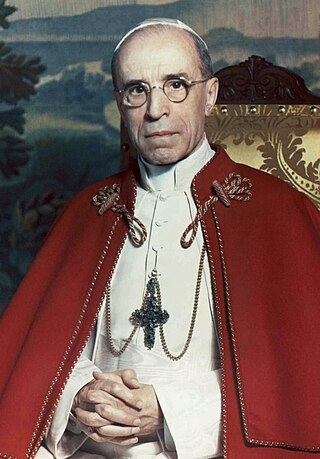 2
Pope Pius XII was head of the Catholic Church and sovereign of the Vatican City State from 2 March 1939 until his death in October 1958. Before his election to the papacy, he served as secretary of...
2
Pope Pius XII was head of the Catholic Church and sovereign of the Vatican City State from 2 March 1939 until his death in October 1958. Before his election to the papacy, he served as secretary of...
Galileo Galilei
 2
Galileo di Vincenzo Bonaiuti de' Galilei, commonly referred to as Galileo Galilei or simply Galileo, was an Italian astronomer, physicist and engineer, sometimes described as a polymath. He was born...
2
Galileo di Vincenzo Bonaiuti de' Galilei, commonly referred to as Galileo Galilei or simply Galileo, was an Italian astronomer, physicist and engineer, sometimes described as a polymath. He was born...
Augustine of Hippo
 2
Augustine of Hippo, also known as Saint Augustine, was a theologian and philosopher of Berber origin and the bishop of Hippo Regius in Numidia, Roman North Africa. His writings influenced the...
2
Augustine of Hippo, also known as Saint Augustine, was a theologian and philosopher of Berber origin and the bishop of Hippo Regius in Numidia, Roman North Africa. His writings influenced the...
Tomás Morales Castellano
 2
Tomás Morales Castellano fue un poeta español, máximo representante del modernismo lírico insular e iniciador de la poesía canaria moderna. Es considerado uno de los principales poetas del modernismo...
2
Tomás Morales Castellano fue un poeta español, máximo representante del modernismo lírico insular e iniciador de la poesía canaria moderna. Es considerado uno de los principales poetas del modernismo...
Bentejuí
 2
Bentejuí fue un aborigen de la isla de Gran Canaria hijo del rey o guanarteme de Telde, que lideró la última resistencia aborigen ante la conquista europea de la isla a finales del siglo xv.
2
Bentejuí fue un aborigen de la isla de Gran Canaria hijo del rey o guanarteme de Telde, que lideró la última resistencia aborigen ante la conquista europea de la isla a finales del siglo xv.
Maninidra
 2
Maninidra was a Guanche from Gran Canaria. He was the brother of the Guanarteme (king) Tenesor Semidan, later known as Fernando Guanarteme. Maninidra was the mastermind and executor of the...
2
Maninidra was a Guanche from Gran Canaria. He was the brother of the Guanarteme (king) Tenesor Semidan, later known as Fernando Guanarteme. Maninidra was the mastermind and executor of the...
Antonio José Álvarez de Abreu, 1st Marquis de la Regalía
 2
Antonio José Álvarez de Abreu, Marquis de la Regalía by King Philip V of Spain on 8 July 1738.
2
Antonio José Álvarez de Abreu, Marquis de la Regalía by King Philip V of Spain on 8 July 1738.
Manuel Velázquez Cabrera
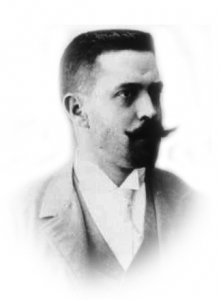 2
Manuel Velázquez Cabrera fue un abogado y político español, nacido el 11 de noviembre de 1863 en Tiscamanita, pueblo del municipio majorero de Tuineje, en la isla canaria de Fuerteventura. Se le...
2
Manuel Velázquez Cabrera fue un abogado y político español, nacido el 11 de noviembre de 1863 en Tiscamanita, pueblo del municipio majorero de Tuineje, en la isla canaria de Fuerteventura. Se le...
Nicolás Estévanez
 2
Nicolás Estévanez Murphy was a Spanish military officer, politician, essayist and poet. A federal republican, he briefly served as civil governor of Madrid and as Minister of War in the wake of the...
2
Nicolás Estévanez Murphy was a Spanish military officer, politician, essayist and poet. A federal republican, he briefly served as civil governor of Madrid and as Minister of War in the wake of the...
Ataúlfo Argenta
 2
Ataúlfo Exuperio Martín de Argenta Maza was a Spanish conductor and pianist.
2
Ataúlfo Exuperio Martín de Argenta Maza was a Spanish conductor and pianist.
Diego Velázquez
 2
Diego Rodríguez de Silva y Velázquez, Knight of the Order of Santiago was a Spanish painter, the leading artist in the court of King Philip IV of Spain and Portugal, and of the Spanish Golden Age.
2
Diego Rodríguez de Silva y Velázquez, Knight of the Order of Santiago was a Spanish painter, the leading artist in the court of King Philip IV of Spain and Portugal, and of the Spanish Golden Age.
Alonso de Alvarado
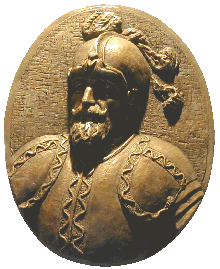 2
Alonso de Alvarado Montaya González de Cevallos y Miranda (1500–1556) was a Spanish conquistador and knight of the Order of Santiago.
2
Alonso de Alvarado Montaya González de Cevallos y Miranda (1500–1556) was a Spanish conquistador and knight of the Order of Santiago.
Luis de Góngora
 2
Luis de Góngora y Argote was a Spanish Baroque lyric poet and a Catholic prebendary for the Church of Córdoba. Góngora and his lifelong rival, Francisco de Quevedo, are widely considered the most...
2
Luis de Góngora y Argote was a Spanish Baroque lyric poet and a Catholic prebendary for the Church of Córdoba. Góngora and his lifelong rival, Francisco de Quevedo, are widely considered the most...
Bartolomé García Ximénez Rabadán
 2
Bartolomé García Ximénez Rabadán fue obispo de Canarias entre 1665-1690. Fue el segundo obispo con un pontificado más largo en esta diócesis, tras Antonio Pildain y Zapiain.
2
Bartolomé García Ximénez Rabadán fue obispo de Canarias entre 1665-1690. Fue el segundo obispo con un pontificado más largo en esta diócesis, tras Antonio Pildain y Zapiain.
Juan Núñez de la Peña
 2
Juan Núñez de la Peña was a Spanish historian. Born in San Cristóbal de La Laguna, he studied Latin and the humanities in the college of San Agustín de La Laguna and was subsequently ordained priest....
2
Juan Núñez de la Peña was a Spanish historian. Born in San Cristóbal de La Laguna, he studied Latin and the humanities in the college of San Agustín de La Laguna and was subsequently ordained priest....
Vicente Blasco Ibáñez
 2
Vicente Blasco Ibáñez was a journalist, politician and bestselling Spanish novelist in various genres whose most widespread and lasting fame in the English-speaking world is from Hollywood films that...
2
Vicente Blasco Ibáñez was a journalist, politician and bestselling Spanish novelist in various genres whose most widespread and lasting fame in the English-speaking world is from Hollywood films that...
Saint Joseph
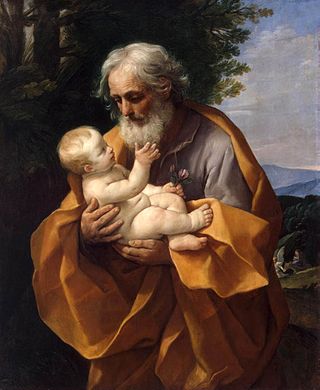 2
Joseph was a 1st-century Jewish man of Nazareth who, according to the canonical Gospels, was married to Mary, the mother of Jesus, and was the legal father of Jesus.
2
Joseph was a 1st-century Jewish man of Nazareth who, according to the canonical Gospels, was married to Mary, the mother of Jesus, and was the legal father of Jesus.
Rafael Alberti
 2
Rafael Alberti Merello was a Spanish poet, a member of the Generation of '27. He is considered one of the greatest literary figures of the so-called Silver Age of Spanish Literature, and he won...
2
Rafael Alberti Merello was a Spanish poet, a member of the Generation of '27. He is considered one of the greatest literary figures of the so-called Silver Age of Spanish Literature, and he won...
Albert Einstein
 2
Albert Einstein was a German-born theoretical physicist who is widely held to be one of the greatest and most influential scientists of all time. Best known for developing the theory of relativity,...
2
Albert Einstein was a German-born theoretical physicist who is widely held to be one of the greatest and most influential scientists of all time. Best known for developing the theory of relativity,...
Saint Peter
 2
Saint Peter, also known as Peter the Apostle, Simon Peter, Simeon, Simon, or Cephas, was one of the Twelve Apostles of Jesus Christ and one of the first leaders of the early Christian Church. He...
2
Saint Peter, also known as Peter the Apostle, Simon Peter, Simeon, Simon, or Cephas, was one of the Twelve Apostles of Jesus Christ and one of the first leaders of the early Christian Church. He...
Fernando Guanarteme
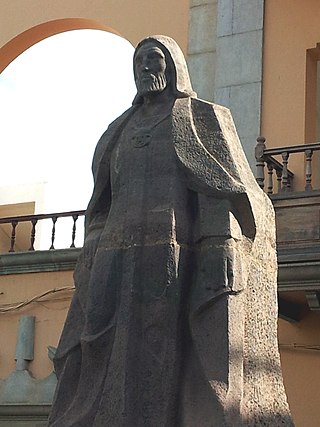 2
Fernando Guanarteme was a Guanche King and ally of the Spaniards who assisted them in their conquest of the Canary Islands during the late fifteenth century. He was originally from Gran Canaria. He...
2
Fernando Guanarteme was a Guanche King and ally of the Spaniards who assisted them in their conquest of the Canary Islands during the late fifteenth century. He was originally from Gran Canaria. He...
Thomas Edison
 2
Thomas Alva Edison was an American inventor and businessman. He developed many devices in fields such as electric power generation, mass communication, sound recording, and motion pictures. These...
2
Thomas Alva Edison was an American inventor and businessman. He developed many devices in fields such as electric power generation, mass communication, sound recording, and motion pictures. These...
Denis Diderot
 2
Denis Diderot was a French philosopher, art critic, and writer, best known for serving as co-founder, chief editor, and contributor to the Encyclopédie along with Jean le Rond d'Alembert. He was a...
2
Denis Diderot was a French philosopher, art critic, and writer, best known for serving as co-founder, chief editor, and contributor to the Encyclopédie along with Jean le Rond d'Alembert. He was a...
Lope de Vega
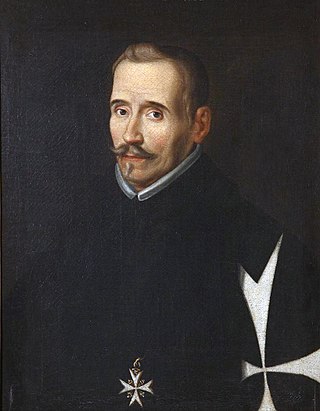 2
Félix Lope de Vega y Carpio was a Spanish playwright, poet, and novelist who was a key figure in the Spanish Golden Age (1492–1659) of Baroque literature. In the literature of Spain, Lope de Vega is...
2
Félix Lope de Vega y Carpio was a Spanish playwright, poet, and novelist who was a key figure in the Spanish Golden Age (1492–1659) of Baroque literature. In the literature of Spain, Lope de Vega is...
Lope de Hoces
 2
Lope de Hoces was a Spanish admiral who was killed in action at the Battle of the Downs.
2
Lope de Hoces was a Spanish admiral who was killed in action at the Battle of the Downs.